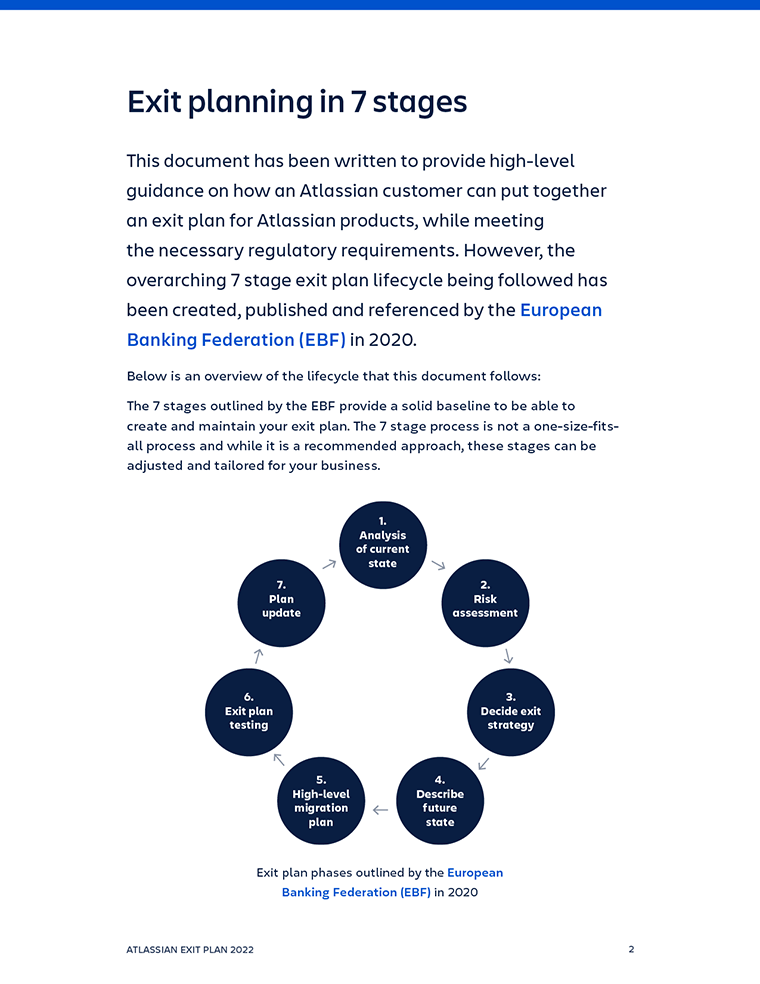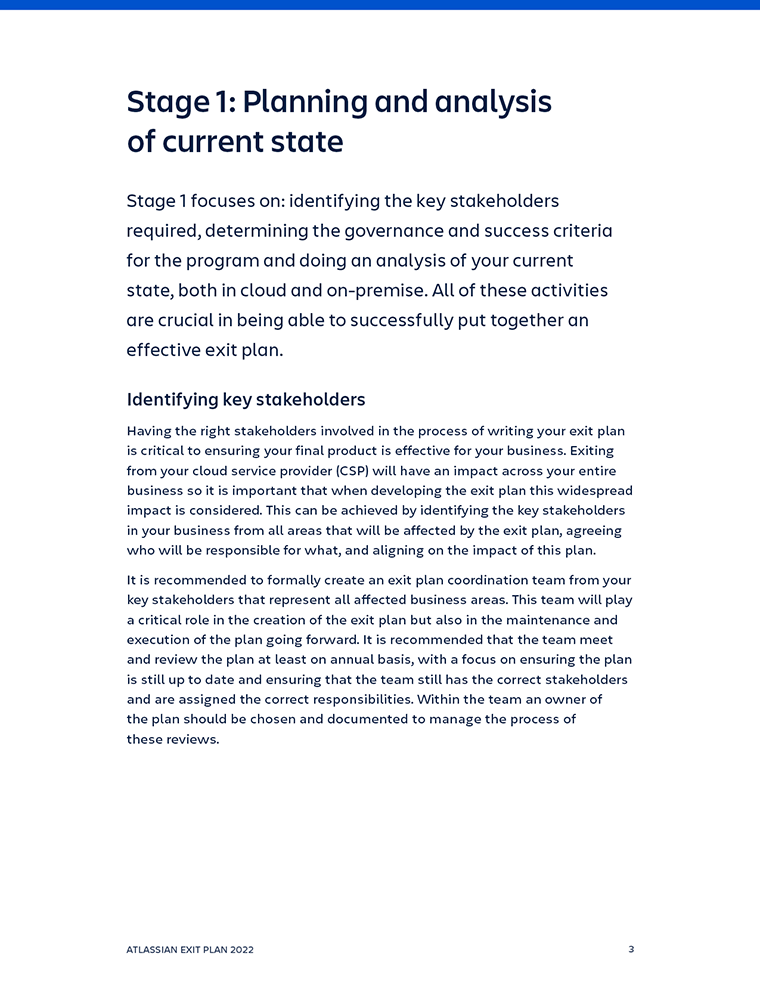
FREE DOWNLOAD
Atlassian Exit Plan 2023
Executive summary
With the growing dependency on Cloud Service Providers (CSPs) for many businesses across the globe, increased regulatory requirements and changes in vendor circumstances have put an increased pressure on businesses to ensure that they have planned for the event that they need to withdraw from a contract or discontinue services with their CSP (for any reason) and that their data needs to be moved off platform intact. This pressure has come through the publishing and updating of guidelines and regulations in several countries and has become a more prominent topic in recent years. Atlassian has a deep commitment to creating an open technology ecoystem and transparency with our customers is at the forefront on this. Atlassian strives to remove the barriers for potential customers to join us and use our products, but we are understanding of choice in the market. While we want customers to stay with us, we acknowledge the need of an exit plan and want to support our customers throughout their journey with Atlassian.
Key takeaways
Support your compliance & commitments
Plan and create your own Exit Plan
Know your rights to Data Portability
PDF content preview
Exit planning in 7 stages
This document has been written to provide high-level guidance on how an Atlassian customer can put together an exit plan for Atlassian products, while meeting the necessary regulatory requirements. However, the overarching 7 stage exit plan lifecycle being followed has been created, published and referenced by the European Banking Federation (EBF) in 2020.
Below is an overview of the lifecycle that this document follows:
Exit Plan Phases
- Analysis of Current State
- Risk Assessment
- Decide Exit Strategy
- Describe Future State
- High-Level Migration Plan
- Exit Plan Testing
- Plan Update
The 7 stages outlined by the EBF provide a solid baseline to be able to create and maintain your exit plan. The 7 stage process is not a one-size-fitsall process and while it is a recommended approach, these stages can be adjusted and tailored for your business.
Stage 1: Planning and analysis of current state
Stage 1 focuses on: identifying the key stakeholders required, determining the governance and success criteria for the program and doing an analysis of your current state, both in cloud and on-premise. All of these activities are crucial in being able to successfully put together an effective exit plan.
Identifying key stakeholders
Having the right stakeholders involved in the process of writing your exit plan is critical to ensuring your final product is effective for your business. Exiting from your cloud service provider (CSP) will have an impact across your entire business so it is important that when developing the exit plan this widespread impact is considered. This can be achieved by identifying the key stakeholders in your business from all areas that will be affected by the exit plan, agreeing who will be responsible for what, and aligning on the impact of this plan.
It is recommended to formally create an exit plan coordination team from your key stakeholders that represent all affected business areas. This team will play a critical role in the creation of the exit plan but also in the maintenance and execution of the plan going forward. It is recommended that the team meet and review the plan at least on annual basis, with a focus on ensuring the plan is still up to date and ensuring that the team still has the correct stakeholders and are assigned the correct responsibilities. Within the team an owner of the plan should be chosen and documented to manage the process of these reviews.
PDF preview


Download the complete report
Atlassian Exit Plan 2023